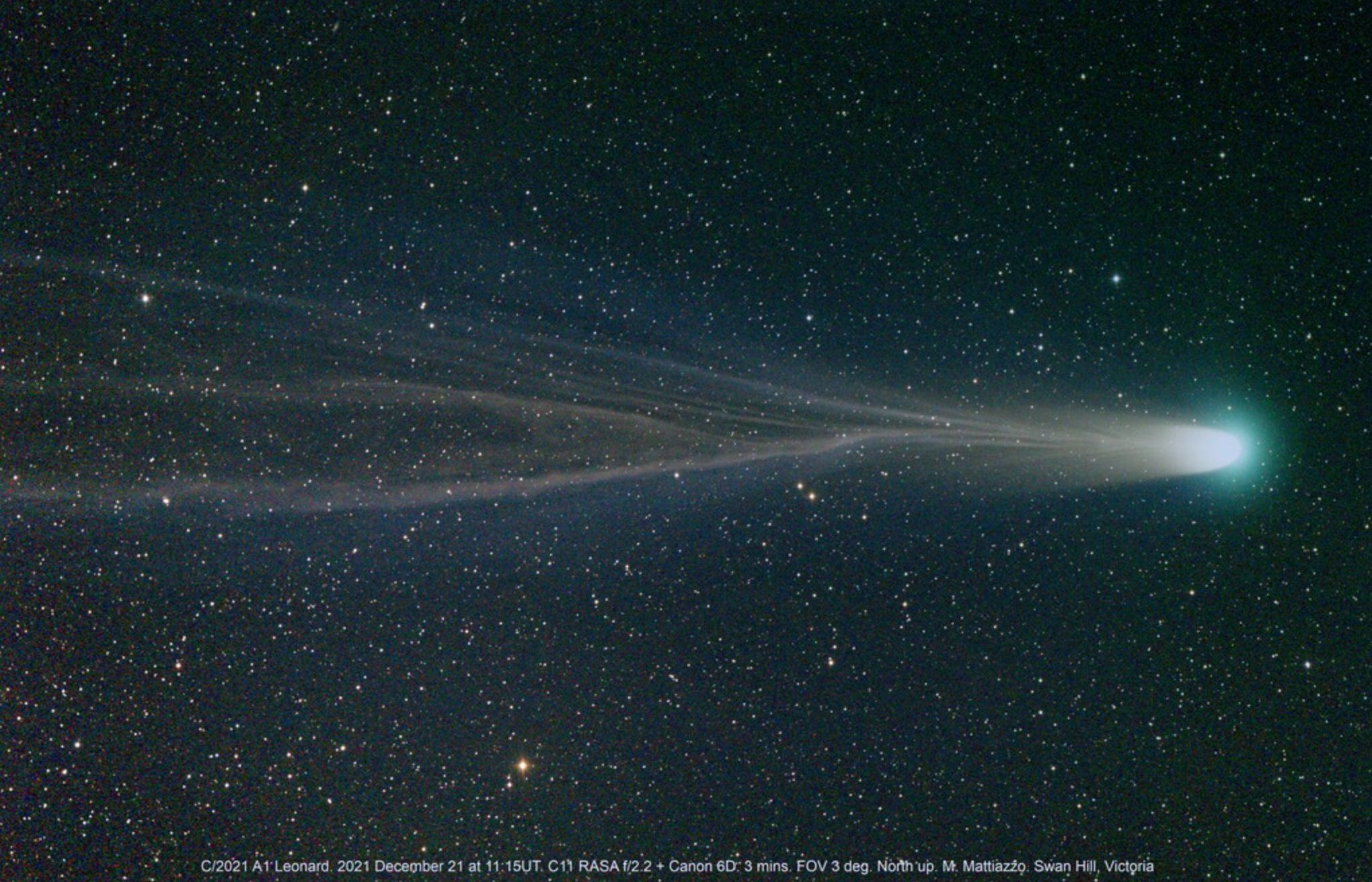If you want to make a wish on a shooting star, you might want to turn to the night skies and see the impressive comet Leonard flying by. However, skywatchers have to be quick about it, since the comet is leaving our solar system forever on January 3, 2022. Also known as C/2021 A1, or Leonard, the comet has been visible throughout December, and came closest to Earth on December 12, passing within 21 miles of our planet.
Another chance arose on December 17, when Leonard made a close flyby next to Venus. Since the planet is clearly visible in the night sky, amateur astronomers were able to spot the comet in reference to Venus.
Where is Leonard comet now?
Currently, the Leonard comet is located in the Sagittarius constellation, but one has to find a dark spot of sky to actually see it. Greg Leonard, an Arizona University senior researcher, and the astronomer credited for discovering the comet in 2021, said that Leonard can be viewed by the casual observer too.
Also Read | Modern Santa ditches reindeers, hops on firefighter’s ladder to bring presents
The man, after whom the comet is named, had the following suggestion “Find yourself a dark sky with a good view of the horizon, bring binoculars and I think you may be rewarded.”
How to see the Leonard comet?
The best way to see the Leonard comet is with the aid of binoculars or a telescope. Currently, the comet is expected to streak across the west-southwestern horizon, until Christmastime.
Also Read | Creative DIYs to make this Christmas special
Since the best viewing time is an hour or so after sunset, there might be some difficulties. It is tougher to see a celestial body against the fading light of the day, as opposed to the darkness of the night sky. Further, with a full moon, there is also a lot of illumination at night, which is why some skywatchers might find it a little tough to spot the comet at first.
Also Read | Top 5 Christmas carols for the holiday season
However, if one listens to Leonard’s tips, there is no reason why you can’t catch yourself a Christmas comet.







